Idea by
Joel Austin Cunningham
Call for ideas 2019
Agriact
Agriact
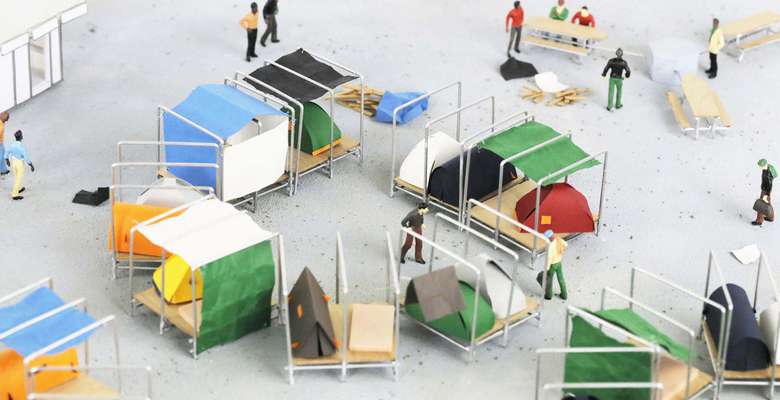
- New alliances
Agriact is an architecturally based business proposal that caters to the emerging market of temporal agricultural labour. In recent years Southern Europe's agricultural industries have experienced a rapid growth in informal and often exploitative labour constructs, accentuated in many contexts by the abundance of transitory individuals produced by the Mediterranean migrant crisis.
Responding to the precarious domestic conditions of these transitory workers, Agriact offers “labour management solutions” composed of architectural modules that have been formulated in response to workers needs. Solutions combine modules providing basic amenities with commercialised elements that formulate reciprocally beneficial relationships between resident labourers and various private entities. While providing much needed services, these commercial modules generate a secondary economy around resident workers and visualise their contribution to domestic economies.
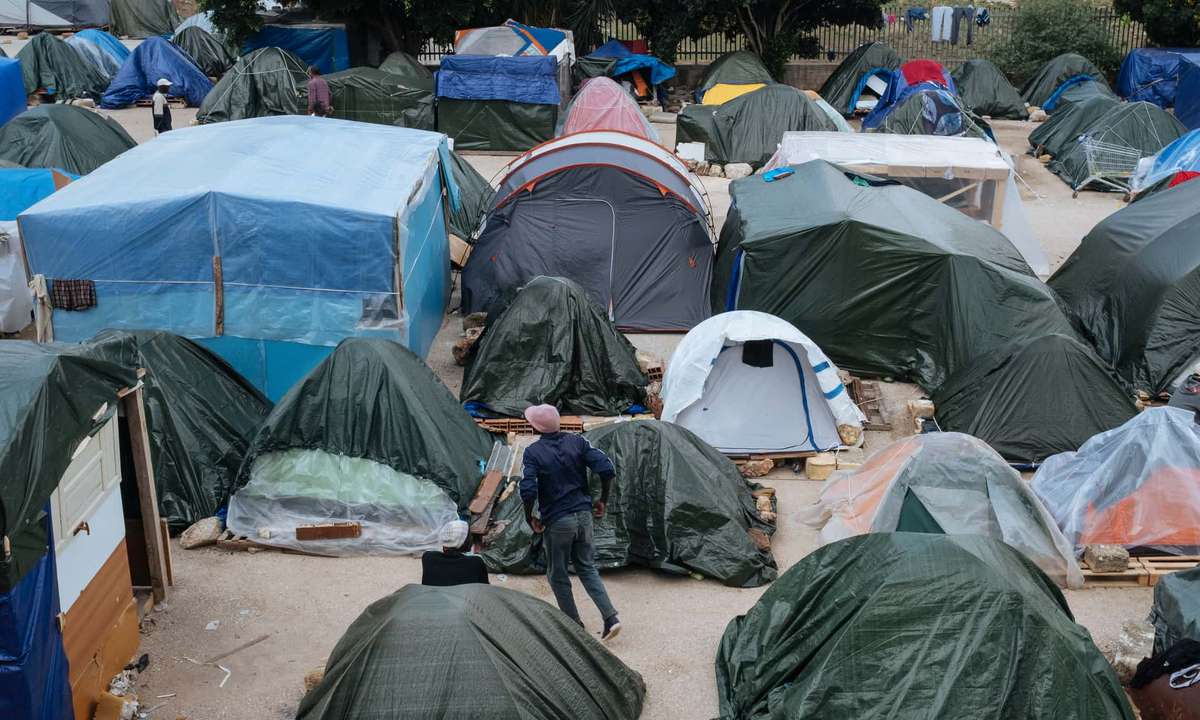
Current domestic condition of migrant agricultural workers, Campobello di Mazara, Sicily.
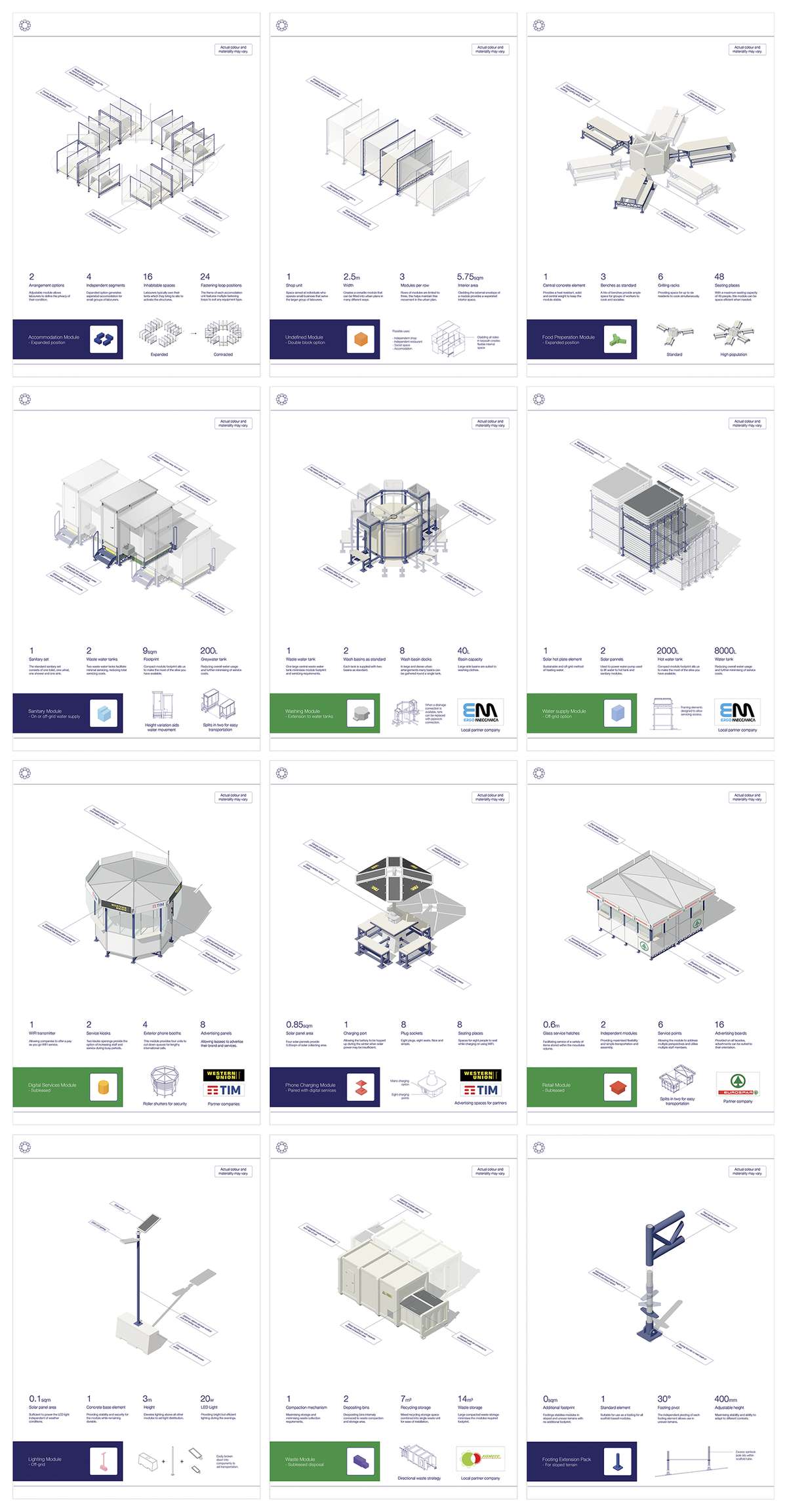
Selection of twelve architectural modules that can be leased by local municipalities, allowing them to accommodate migrant agricultural works in humane domestic environments.
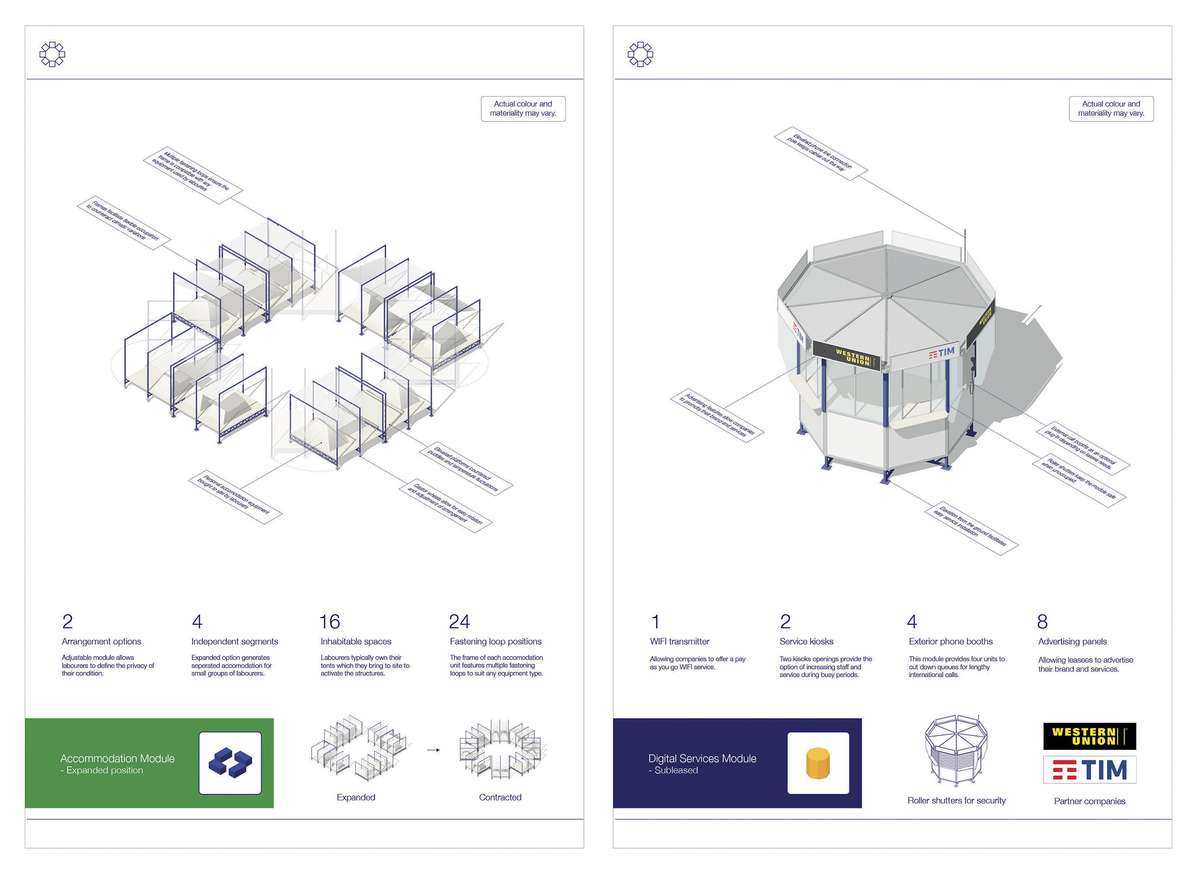
Accommodation modules elevate workers tents from the ground which can often be cold and wet, while frames provide support for additional tarpaulin shelters to be constructed.
A digital services module can be leased by local service providers and used to sell much needed amenities to migrant labourers, including money transfer services, internet access and international phone calls.
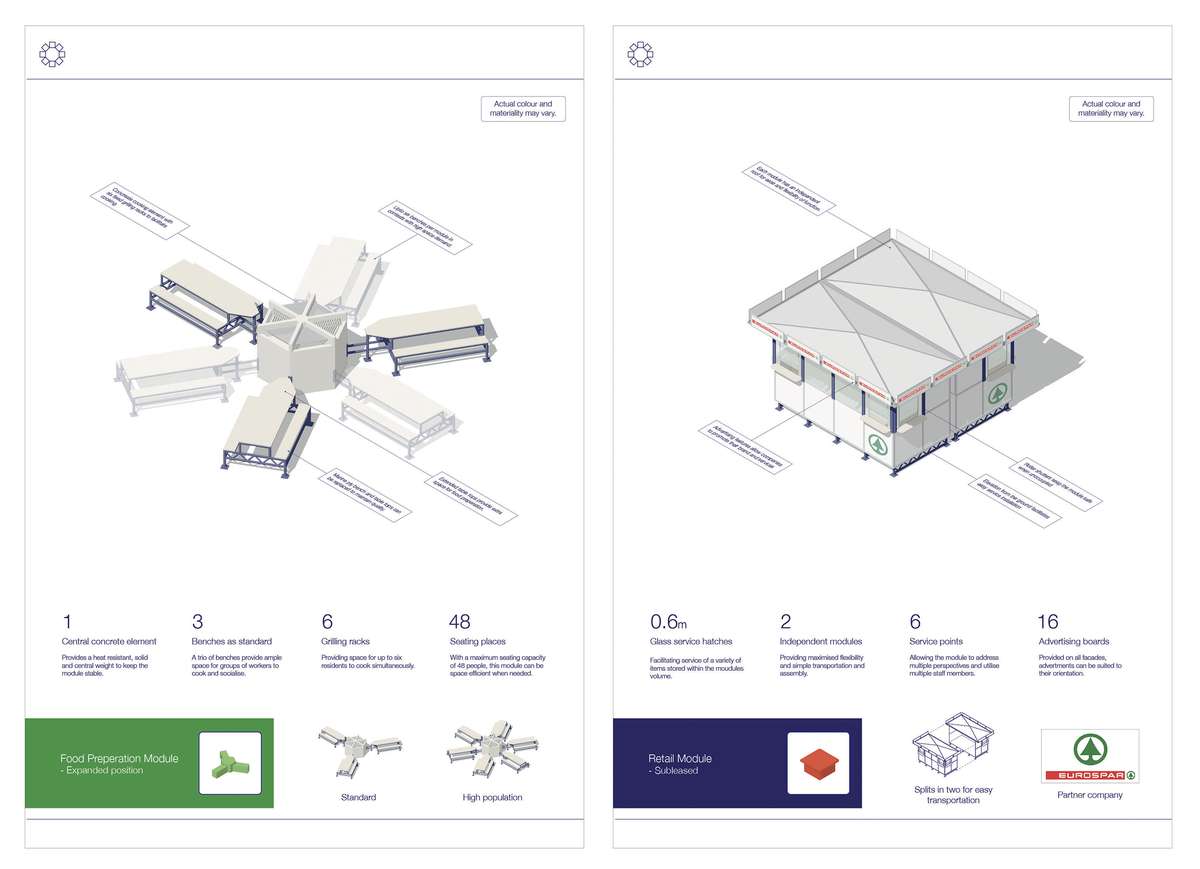
Food preparation modules provide space for hygienic food preparation and consumption while simultaneously creating spaces for social interaction between labourers.
A retail module can be leased by local companies and used to sell various goods to temporal workers, including food, drink and hygiene products.
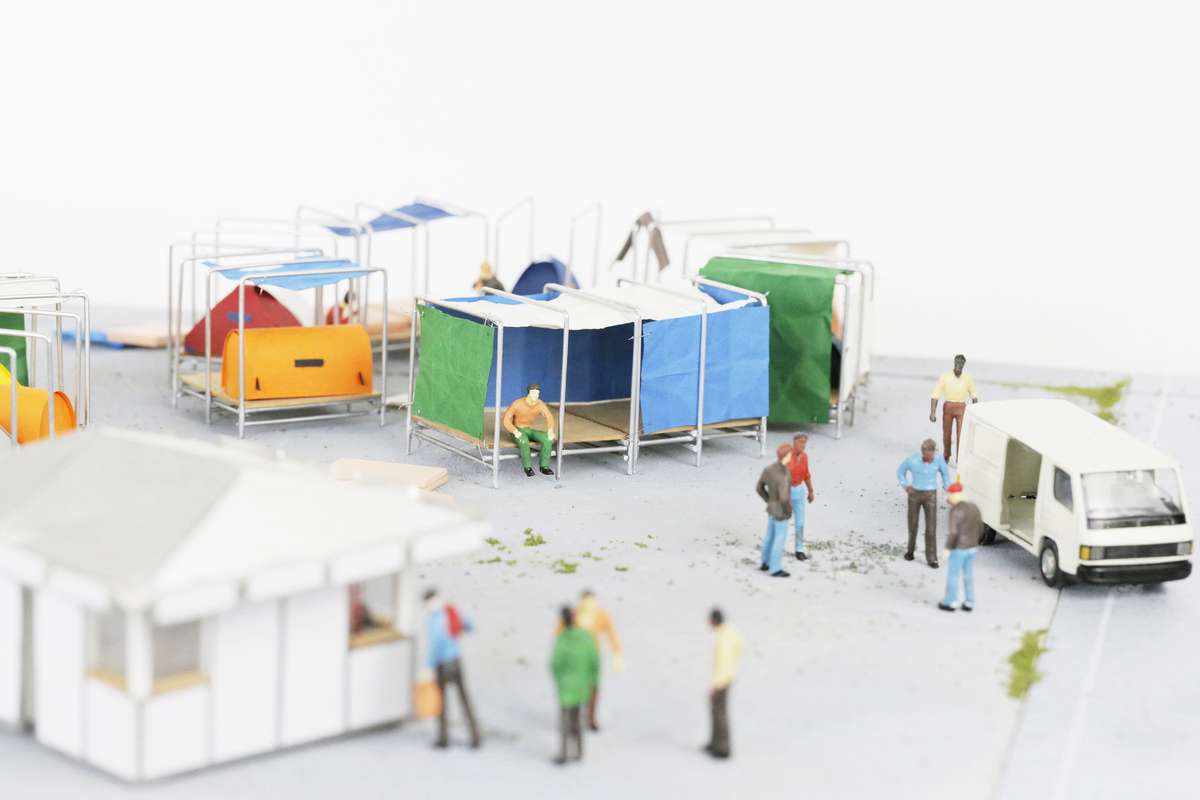
Framing the project as a private business required the architectural representation to be commercially styled and detached from the realities of the labourers domestic situation. However this model looks to contradict this commercial orientation, instead looking to highlight the spatial reality and social improvements that could be instilled by the project proposal.
Agriact
Agriact

- New alliances
Agriact is an architecturally based business proposal that caters to the emerging market of temporal agricultural labour. In recent years Southern Europe's agricultural industries have experienced a rapid growth in informal and often exploitative labour constructs, accentuated in many contexts by the abundance of transitory individuals produced by the Mediterranean migrant crisis.
Responding to the precarious domestic conditions of these transitory workers, Agriact offers “labour management solutions” composed of architectural modules that have been formulated in response to workers needs. Solutions combine modules providing basic amenities with commercialised elements that formulate reciprocally beneficial relationships between resident labourers and various private entities. While providing much needed services, these commercial modules generate a secondary economy around resident workers and visualise their contribution to domestic economies.
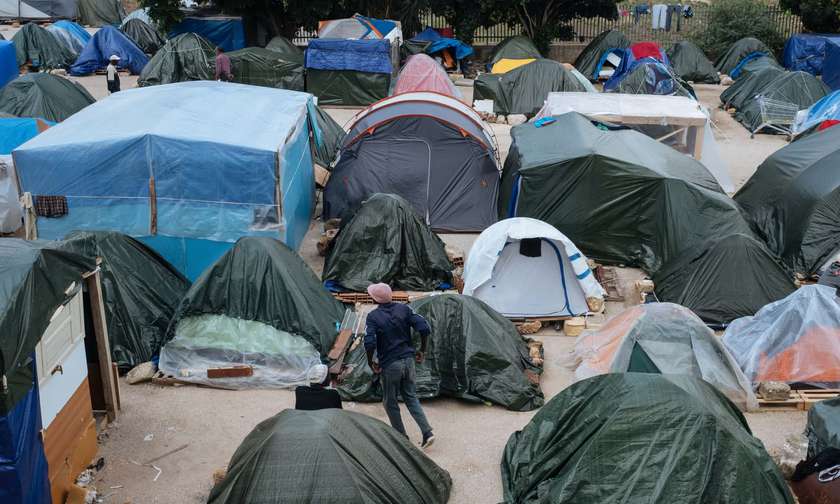
Current domestic condition of migrant agricultural workers, Campobello di Mazara, Sicily.
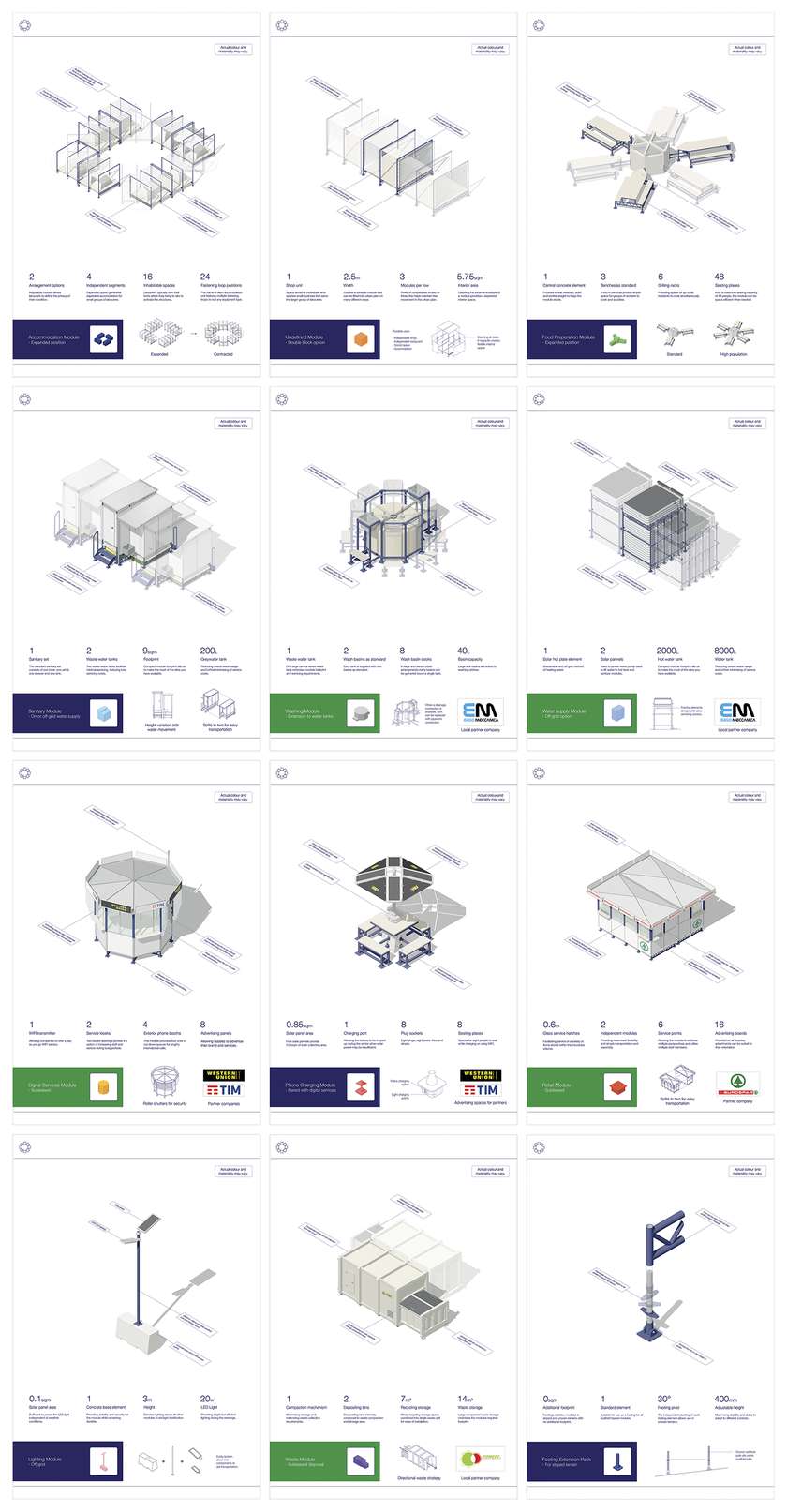
Selection of twelve architectural modules that can be leased by local municipalities, allowing them to accommodate migrant agricultural works in humane domestic environments.
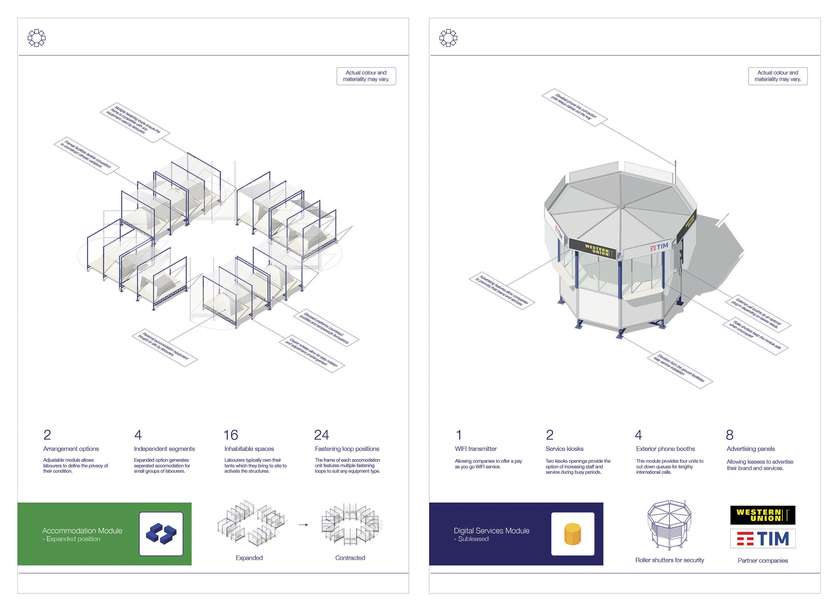
Accommodation modules elevate workers tents from the ground which can often be cold and wet, while frames provide support for additional tarpaulin shelters to be constructed.
A digital services module can be leased by local service providers and used to sell much needed amenities to migrant labourers, including money transfer services, internet access and international phone calls.
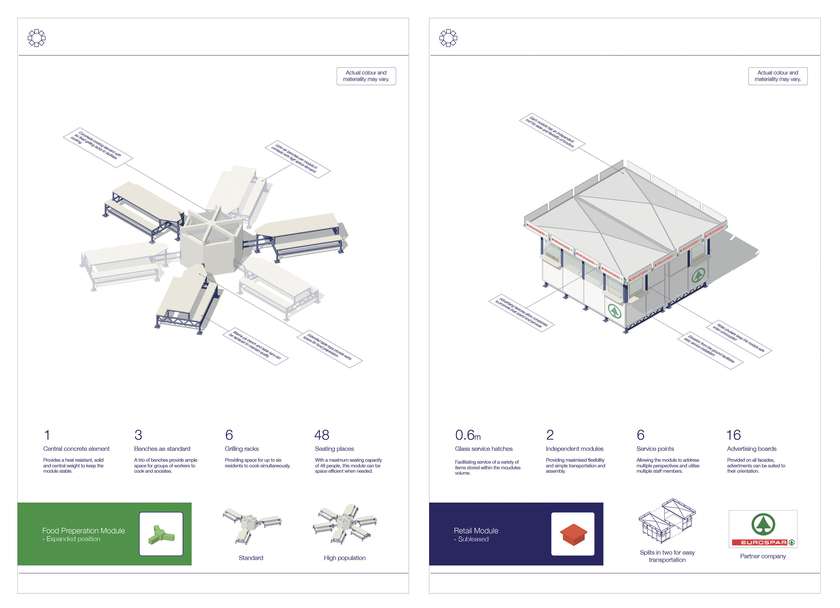
Food preparation modules provide space for hygienic food preparation and consumption while simultaneously creating spaces for social interaction between labourers.
A retail module can be leased by local companies and used to sell various goods to temporal workers, including food, drink and hygiene products.
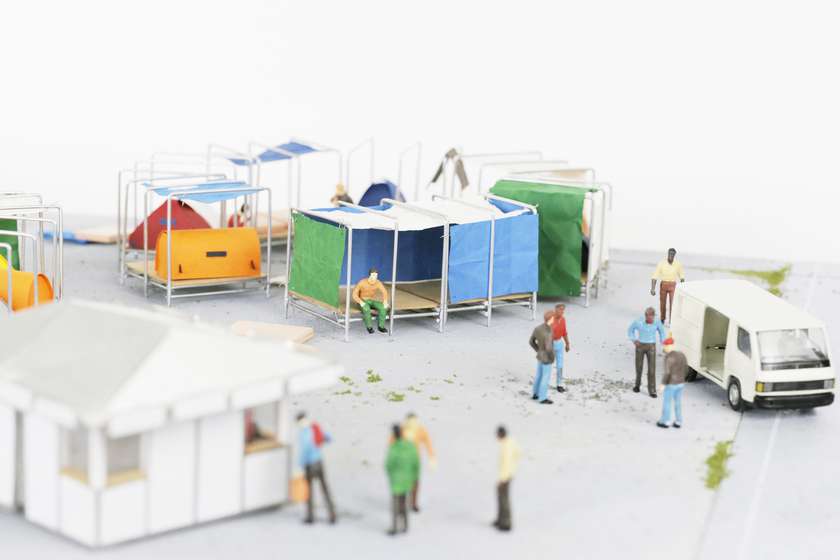
Framing the project as a private business required the architectural representation to be commercially styled and detached from the realities of the labourers domestic situation. However this model looks to contradict this commercial orientation, instead looking to highlight the spatial reality and social improvements that could be instilled by the project proposal.